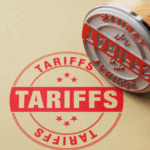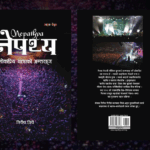Last week, we witnessed the annual ‘Yenya’, also known as Indra Jatra, a vibrant 8-day-long festival celebrated in Kathmandu. It was amazing to see thousands throng the streets. In contrast, my memories of the festival were of some old people playing instruments as the chariots were pulled through dimly lit lanes. I asked my colleagues and friends belonging to the inner core city about their memories of the festival, perhaps playing instruments or participating during their school days. Surprisingly, they answered me in the negative. Like me, they marveled about how this festival today is full of young people, especially young women who now play the traditional musical instruments that used to be reserved for men.
It is wonderful how these young people play the drums and cymbals and then take a break to sip an iced latte in a café. They traverse time, culture, and generations. Snapchat, Instagram, and TikTok provide opportunities to share and tell the world the wonderful lives they live. When I wanted to know the location of the chariots, one of my colleagues showed me the location on Galli Maps, an app that tracks live locations and showcases many cultural events.
The festivals are going global with Nepalis in 180 countries. If one searches on the internet, one can find celebrations planned in many countries. Indra Jatra has become a public holiday in the Indian state of Sikkim, which I was able to experience a few years back. In Maryland, Rakesh Tuladhar posted on Facebook, “It’s my honor to be performing as Lakhey Aaju for 5 consecutive years in upcoming Yenya Punhi (Indra Jatra) to be held on September 21, Saturday at Blackhill Regional Park, Maryland”. One could not have imagined such a proliferation of Newa festivals globally just a few decades back.
Nepal’s economy revolves around festivals. The anticipation of a good harvest in the agrarian economy brought about much joy in this fertile valley and other parts of the country. A good harvest earlier increased one’s bartering power. Later, with the advent of money, one could buy items they did not produce. Throughout centuries marked by extreme poverty from famine and calamities, both natural and man-made, festivals in Nepal offered a rare chance for indulgence in special meals. For example, thirty years ago, in Thalara, Bajhang, eating rice daily was considered extravagant and was a treat reserved for Dashain. Similarly, fruits and dry fruits were brought home during Mha Puja and Bhai Tika festivities. In the alleys of Kathmandu Valley, counters selling paan (beetle) sprung up during the Tihar festivities. Sweet shops do great business during festivals and scores of Indian sweet makers flock to the Kathmandu valley during festivals. I have met groups from India who bring in labor from India and take away profits of twenty million in a week by producing sweets on contracts for stores in Kathmandu Valley.
Technology has revolutionized how Nepalis engage with festivals. Twenty years ago, Bala Joshi of Thamel.com began selling goats online and delivering them directly to customers. Since then, online platforms have mushroomed, whether it is to send gifts or buy meals. Instagram and TikTok are filled with vendors who can sell anything the customer is looking for, whether they are sourced in Nepal or outside. Delivery platforms have come a long way since Suman Shakya started Bitarak.com twenty years ago. The ease of delivery has been one of the biggest transformations brought by the advent of easy payment online over different platforms. The pandemic accelerated the way goods were sold, delivered, and paid for.
In the past two decades, another big trend that has become noticeable is Nepalis traveling during festivals. Young people are going for treks and exploration trips across the country while families who can afford are buying packages designed for festivities. In 2018, over forty thousand Nepalis went to Bali during the holiday season as visas was available on arrival. With parents, children, relatives, and friends outside Nepal, Nepalis use the time to also visit them. If obtaining visas were not difficult for Nepalis, the numbers would have exploded as we see the increased number of visitors to countries like Azerbaijan or Georgia. With nuclear families and working couples, the festivals are the only time they get holidays, and schools are closed. While better air connectivity has also made traveling easier, the construction of thousands of kilometers of roads has made beautiful parts of Nepal more accessible. Today, a picturesque destination like Ghandruk, which once required a two-day trek from Pokhara, is now a leisurely two-hour drive.
With Indra Jatra kicking off the festive season in Kathmandu Valley, the next three months will be filled with celebrations until Yomari Punhi on December 15 this year, which is known for its jaggery-filled dumplings. This period will also be the time when the economic activities would be at their peak. Perhaps, more than three-fourths of the year’s consumption takes place in this quarter itself. Every Nepali looks forward to this festival season whether to sell or to buy or to celebrate. Wishing everyone a happy festive season!
Sujeev is the founder CEO of beed. He leverages over 25 years of experience in diverse fields and geographies to advise, lead and inspire. With comprehensive networks in Nepal’s public, private, civil and diplomatic sectors, Sujeev is a trusted business and policy advisor and respected strategic thinker. From economies of developing countries to economies of human beings, he moves across different worlds, with his passion for the Himalayas being the axis.





